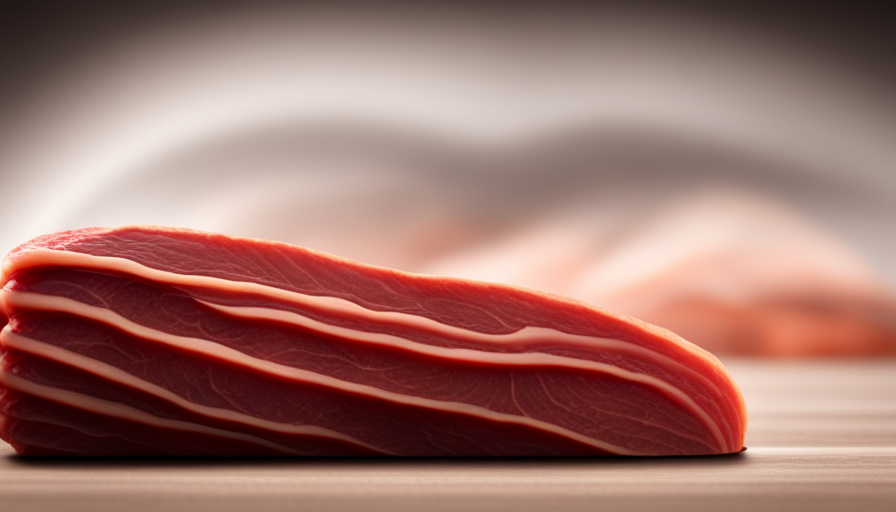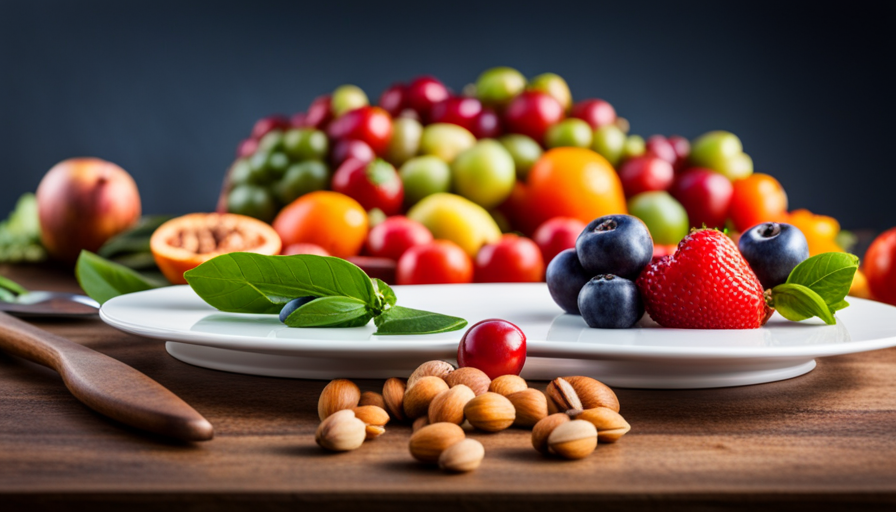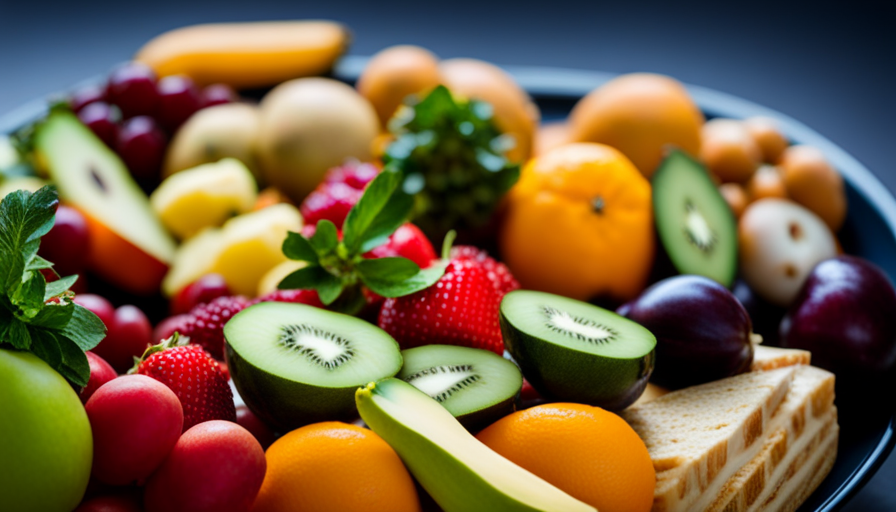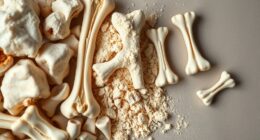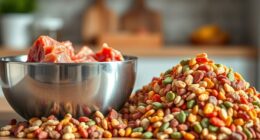Calling all coffee enthusiasts! Celebrate with joy! Treat yourself to a delightful assortment of DIY coffee syrups that will enhance your everyday coffee experience. These delicious blends offer a budget-friendly option to pre-flavored coffees, giving you the freedom to personalize your morning coffee just the way you like it.
With a base of simple syrup, which is a blend of equal parts sugar and water, the possibilities are endless. From classic flavors like vanilla and caramel to more adventurous options like blackberry and rose, there’s a syrup to satisfy every palate.
Embrace the changing seasons with pumpkin spice and autumn spice syrup, or get creative by combining different flavors to craft your own signature blend. Whether you prefer a Moka pot or an AeroPress, these syrups will take your coffee experience to new heights.
Get ready to embark on a flavor-filled journey that will awaken your senses and leave you craving for more.
Key Takeaways
- DIY coffee syrups are a cost-effective alternative to buying flavored coffees at cafes.
- Simple syrup is the base for most homemade coffee syrups.
- There is a wide variety of flavors to experiment with, such as vanilla, caramel, butterscotch, almond, and more.
- Coffee syrups can be used to enhance the flavor of coffee or create delicious specialty drinks like lattes and frappuccinos.
What are coffee syrups?
Coffee syrups are flavorful additives that can be made at home using simple ingredients such as sugar, water, and various flavorings. They enhance the taste of coffee while providing a cheaper alternative to buying flavored coffees at a cafe.
The pros of using coffee syrups include the ability to customize the flavor to suit personal preferences, as well as the cost-effectiveness compared to purchasing flavored coffees. Additionally, coffee syrups offer a wide range of creative ways to use them in recipes, such as adding them to baked goods, cocktails, or even drizzling them over ice cream.
However, there are some cons to consider, such as the additional sugar and calories that coffee syrups can add to your daily brew. It is important to use them in moderation and be mindful of your overall sugar intake.
Despite these considerations, coffee syrups provide a convenient and versatile way to elevate the flavor of your daily cup of joe.
Common syrup flavors
Various flavors of syrup can be created at home to enhance the taste of a brewed beverage. Here are four common syrup flavors that can be made from scratch:
-
Vanilla syrup: Made with vanilla pods or extract, this syrup adds a sweet and aromatic flavor to your coffee.
-
Caramel syrup: By cooking sugar and water until golden and adding vanilla and salt, you can create a rich and indulgent caramel syrup that pairs well with coffee.
-
Pumpkin spice syrup: A must-have for pumpkin spice latte season, this syrup combines spices, pumpkin puree, and condensed milk to create a warm and comforting flavor profile.
-
Peppermint syrup: With just three ingredients, this simple syrup can be added to your coffee for a refreshing and minty twist.
By making your own coffee syrups at home, you have the freedom to experiment with different flavors and customize your beverages to suit your taste preferences. Additionally, homemade syrups are often cheaper than buying pre-made flavored coffees at a cafe, making it a cost-effective option.
How to make simple syrup
One popular method for creating a simple syrup involves combining equal parts sugar and water. Simple syrup serves as the base for many of the homemade coffee syrups mentioned earlier. It is a versatile ingredient that can be used in various ways to enhance the flavor of your daily brew.
One creative use of simple syrup is to add it directly to your coffee to sweeten and flavor it. This allows you to customize the level of sweetness according to your preference.
Another way to use simple syrup is to incorporate it into iced coffee or cold brews, as it dissolves easily and evenly in cold liquids.
Additionally, simple syrup can be added to milk and ice to create a delightful mocha frappuccino or to enhance the coffee flavor in other drinks. Its liquid form also makes it ideal for drizzling over desserts or mixing into cocktails.
With simple syrup, the possibilities to elevate your coffee experience are endless.
Popular flavored syrup recipes
A range of flavorful syrup recipes have gained popularity for enhancing the taste of beverages, including vanilla, caramel, almond, blackberry, cinnamon, chocolate, pumpkin spice, and peppermint.
These unique coffee syrup combinations provide an opportunity for coffee enthusiasts to experiment and create their own signature flavors.
Making your own coffee syrups offers several benefits. Firstly, it allows you to control the ingredients and customize the sweetness and flavor intensity according to your preference. Secondly, it is a cost-effective alternative to purchasing flavored coffees from cafes. Additionally, homemade syrups are free from artificial additives and preservatives, promoting a healthier choice. Lastly, creating your own syrups adds a personal touch to your daily brew, elevating the experience and satisfying your taste buds.
So why not indulge in the art of syrup-making and explore the endless possibilities of enhancing your coffee?
Personal brewing preferences
The author’s brewing preferences include using an AeroPress for daily brewing and a Hario V60 for lazy weekend mornings.
The choice of brewing method can have a significant impact on the flavor profile of coffee. The AeroPress is known for producing a clean and smooth cup of coffee, with a rich and vibrant taste. It uses pressure to extract the flavors from the coffee grounds, resulting in a concentrated and flavorful brew.
On the other hand, the Hario V60 is a pour-over method that allows for more control over the brewing process. It produces a lighter and more delicate cup of coffee, with subtle nuances in flavor.
Additionally, when it comes to coffee syrups, the author suggests exploring alternative sweeteners. This could include options such as agave syrup, stevia, or even natural fruit-based sweeteners, to cater to different dietary preferences and taste preferences.
Frequently Asked Questions
Can coffee syrups be used in beverages other than coffee?
Coffee syrups can indeed be used in beverages other than coffee, allowing for creative and unique flavor combinations. While they are commonly used to enhance the taste of coffee, they can also be utilized in various other ways.
Creative uses for coffee syrups include:
- Drizzling them over pancakes or waffles
- Adding them to milkshakes or smoothies
- Incorporating them into cocktails or mocktails
- Using them as a sweet glaze for meats
Exploring the world of savory coffee syrup recipes opens up endless possibilities for experimenting with different flavors and culinary creations.
Are there any sugar-free options for coffee syrups?
Sugar-free alternatives for coffee syrups are available, providing a healthier option for those watching their sugar intake. These alternatives are often sweetened with natural or artificial sugar substitutes such as stevia, erythritol, or monk fruit extract.
These sugar-free syrups can still add flavor and sweetness to your coffee without the added calories and potential negative health effects of regular syrup. They are a great option for individuals with diabetes or those looking to reduce their sugar consumption while still enjoying a flavorful cup of coffee.
Can flavored syrups be used in both hot and cold drinks?
Flavored syrups can indeed be used in both hot and cold drinks, offering a wide range of possibilities for unique flavor combinations.
For example, in the world of cocktails, flavored syrups are often used to enhance the taste and create interesting drink profiles.
When it comes to coffee, these syrups can be added to both hot and cold beverages, such as lattes, iced coffees, or frappuccinos, to elevate the flavor experience and provide a personalized touch.
Exploring different combinations of flavored syrups opens up endless opportunities for delightful and customized beverages.
How long do homemade coffee syrups typically last?
The shelf life of homemade coffee syrups can vary depending on their ingredients and how they are stored. Generally, homemade coffee syrups can last for about 1 to 2 months when stored in an airtight container in the refrigerator.
It is important to note that syrups containing perishable ingredients like fresh fruit or dairy may have a shorter shelf life. To ensure the longevity of homemade coffee syrups, it is recommended to store them in the refrigerator and use them within a reasonable time frame.
Can coffee syrups be used in non-dairy milk alternatives?
Flavorful alternatives: Coffee syrups for plant-based milk offer a sweet and dairy-free option for coffee enthusiasts.
These syrups can be used in non-dairy milk alternatives, such as almond milk, coconut milk, or oat milk, to enhance the flavor of your daily brew.
With a wide range of flavors available, including vanilla, caramel, and mocha, you can explore the world of non-dairy coffee syrup options to find the perfect combination for your taste preferences.
These syrups provide a flavorful and satisfying addition to your coffee, even without traditional dairy products.
Can I Use Homemade Coffee Syrups in Making Coffee Jelly?
Yes, you can definitely use homemade coffee syrups in making coffee jelly. By adding your own delicious coffee syrups to the mixture, you can create a unique and flavorful coffee jelly recipe that suits your taste. Enjoy experimenting with different flavors to make your own delicious coffee jelly recipe.
Conclusion
In conclusion, this article provides a comprehensive list of 23 homemade coffee syrups that can enhance the flavor of your daily brew. These syrups are a cost-effective alternative to buying flavored coffees at cafes.
By using simple syrup as a base, you can create a wide range of classic and unique flavors like vanilla, caramel, blackberry, and rose.
The article also suggests using flavored beans and combining syrups to create new and exciting flavors.
So why settle for plain coffee when you can indulge in a symphony of delightful flavors that will transport you to a coffee lover’s paradise?




